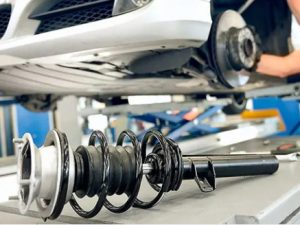Table of Contents
- What Are Shock Absorbers?
- Signs of Worn-Out Shock Absorbers
- How to Monitor Shock Absorbers
- Maintenance Tips for Shock Absorbers
- When to Replace Shock Absorbers
The chassis is the structural backbone of any vehicle, providing the foundation for all other components, including the suspension system, engine, and drivetrain. One of the most critical elements of the suspension system is the shock absorber. These components ensure a smooth and stable ride by dampening the impact of road irregularities. Monitoring and maintaining shock absorbers is essential for vehicle safety, performance, and longevity. In this article, we will explore how to monitor shock absorbers, what to pay attention to, and provide actionable insights for maintaining optimal vehicle performance.
What Are Shock Absorbers?

Shock absorbers are hydraulic or mechanical devices designed to control the oscillations of the suspension system and springs. They absorb and dissipate energy from road bumps, ensuring that the tires maintain consistent contact with the road surface. This improves:
- Vehicle stability
- Ride comfort
- Braking efficiency
- Tire longevity
Signs of Worn-Out Shock Absorbers
Identifying issues with your shock absorbers early can prevent costly repairs and ensure safe driving. Here are common symptoms indicating potential problems:
- Bumpy Ride: Increased discomfort or vibrations during your drive.
- Uneven Tire Wear: Irregular tread patterns on tires caused by poor suspension control.
- Excessive Body Roll: Noticeable tilting during cornering.
- Extended Braking Distance: Decreased efficiency in stopping the vehicle.
- Fluid Leaks: Visible oil or fluid leakage on or around the shock absorbers.
- Nose Diving or Squatting: The front of the vehicle dips while braking or the rear squats during acceleration.
How to Monitor Shock Absorbers
Properly monitoring shock absorbers involves visual inspections, functional tests, and being attentive to driving behavior. Here are key steps:
1. Visual Inspection
- Look for leaks: Check for oil seepage around the shock absorber body.
- Inspect mounts and bushings: Ensure these are intact and free from excessive wear.
- Examine the rod: Check for bends, corrosion, or damage.
2. Functional Testing
- Perform the bounce test: Press down on each corner of the vehicle and release. The vehicle should bounce no more than once or twice before settling.
- Test during driving: Pay attention to ride quality, handling, and stability, particularly on uneven surfaces.
3. Using Diagnostic Tools
- Use a suspension tester: Some auto shops use specialized equipment to measure suspension performance.
- Check error codes: Modern vehicles may display suspension-related issues on diagnostic systems.
Maintenance Tips for Shock Absorbers
To ensure the longevity and performance of your shock absorbers, follow these best practices:
Regular Inspections
- Inspect shock absorbers during every routine service.
- Check for alignment issues that could strain the suspension.
Replacing When Necessary
Shock absorbers generally last between 50,000 and 100,000 kilometers, depending on driving conditions. Replace them when signs of wear appear.
Driving Habits
- Avoid aggressive driving: Minimize sudden stops and sharp turns.
- Drive carefully on rough terrain: Reduce the impact on suspension components.
Lubrication and Cleaning
- Keep the suspension system clean to prevent debris from causing wear.
- Apply lubrication to moving parts as needed.
Table: Shock Absorber Maintenance Checklist
| Task | Frequency | Notes |
|---|---|---|
| Visual inspection | Every 10,000 km or 6 months | Check for leaks and damage |
| Functional testing | Annually or as needed | Perform bounce test and monitor ride quality |
| Suspension alignment check | Annually or as needed | Prevent uneven wear and strain |
| Replacement | Every 50,000–100,000 km | Follow manufacturer’s recommendations |
When to Replace Shock Absorbers

Timely replacement of shock absorbers is crucial. Delaying this can compromise vehicle safety and increase repair costs. Consider replacing them if:
- The vehicle exhibits two or more symptoms of worn-out shock absorbers.
- Recommended mileage for your shock absorbers has been reached.
- You frequently drive on rough or uneven roads.
For high-quality replacement options, consider visiting Elart’s online store to buy shock absorbers.
Conclusion
Shock absorbers play a vital role in the performance and safety of your vehicle. Regular monitoring and timely maintenance can help prevent wear and ensure a comfortable ride. By staying attentive to the signs of wear and following a consistent maintenance schedule, you can enhance the lifespan of your vehicle’s suspension system. For reliable replacement parts, explore Elart’s selection of shock absorbers.
Stay proactive in maintaining your vehicle, and enjoy a smoother, safer driving experience!